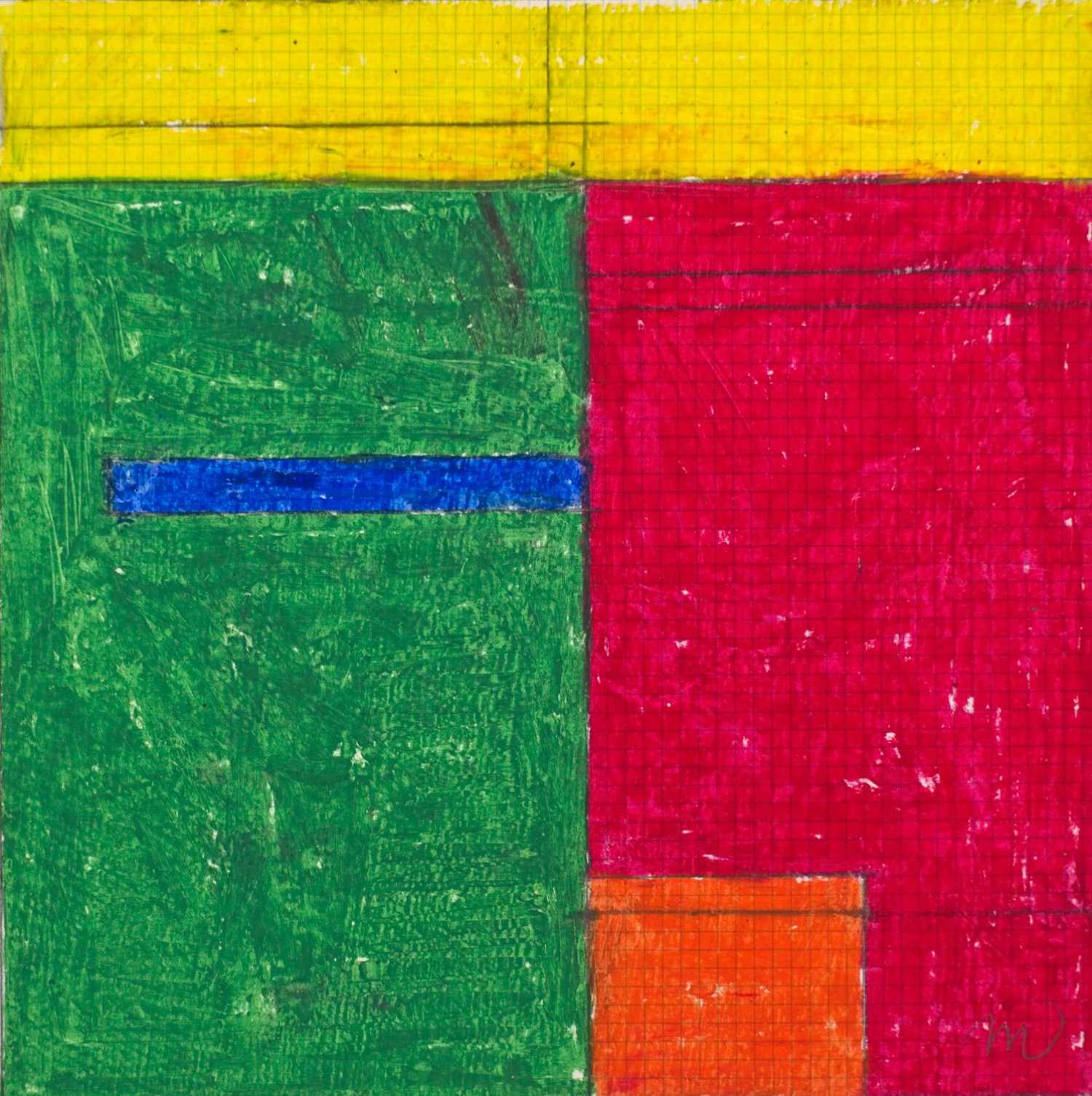
"I wanted to evoke space through the tension between forms, using the energy of colour virtually straight from the manufacturer without mixing, but in the right proportions. Totally lose the surface. It falls away. You start with the experience of the bare gesso, the primed canvas, and that is sublime. That is meditation itself." (Michael Johnson in conversation with Terence Maloon, 'Michael Johnson: Paintings 1968-1988', Art Gallery of NSW, 1989.)
After eschewing figuration and turning to abstraction in the 1960s, Michael Johnson has become one of Australia’s finest abstract painters and masters of colour. After studying in Sydney at the Julian Ashton Art School and East Sydney Technical College through the 1950s, he moved to London in 1960 to study at the Central School of Art. He has exhibited for almost six decades, with early solo exhibitions held in Sydney, Melbourne and New York during the 1960s and 1970s at Central Street Gallery, Gallery A, Max Hutchinson Gallery and direct from the studio. Recalling Kandinsky’s spiritual synaesthesia of colour and music to Rothko’s veils of colour, or from Mondrian’s grids to Frank Stella’s minimalism, each of Johnson’s works is a celebration of the richness of art and art history.
Johnson’s beginnings as an abstract painter came in London in the 1960s, where he became enamoured with the work of Arshile Gorky, Mark Rothko and Kenzo Okada. From London and New York in the 1960s and 1970s to Sydney in the present day, Johnson’s focus has been upon the power of the colour field in works that read as immersive abstract landscapes. Within his expanses of colour, there is also a distinct and continuous attention paid to texture, from sleek, hard-edged, grid paintings in the 1960s and 1970s through to layered, lyrical webs of colour executed from the 1980s to early 2000s. His oeuvre is one of fluid, vital abstraction unfettered from strict geometry or an underpinning ideology, and never at risk of becoming mannered or repetitive: ‘I’m continually trying to avoid blind spots in the repetition of the marks, but they happen, and then there’s a luxury to add more rather than reduce.’
In 1968 Johnson was included in the 'The Field', the inaugural exhibition at the National Gallery of Victoria, Melbourne. In 2018, Johnson’s work returned in ‘The Field Revisited’, National Gallery of Victoria, which commemorated the 50th anniversary of the original show. In 1969 his work was included in the X Bienal Internacional de São Paolo, Brazil, and the UNESCO Biennale, Cagnes-Sur-Mer, France. In 1975 Johnson's first major survey was presented by the Institute of Modern Art, Brisbane, followed by surveys at the University of Melbourne in 1986 and at the Art Gallery of NSW, Sydney in 1989. In 2014 Johnson was awarded the Wynne Prize for Landscape Painting, Art Gallery of NSW, Sydney.